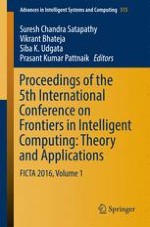2017 | Buch
Proceedings of the 5th International Conference on Frontiers in Intelligent Computing: Theory and Applications
FICTA 2016, Volume 1
herausgegeben von: Suresh Chandra Satapathy, Vikrant Bhateja, Siba K. Udgata, Prasant Kumar Pattnaik
Verlag: Springer Singapore
Buchreihe : Advances in Intelligent Systems and Computing
